Artists
For Artist Anastasia Samoylova, Florida’s Grit and Glamor Are ‘Concentrated Americana’
Curated by Mia Fineman, "Floridas: Anastasia Samoylova and Walker Evans" at the Metropolitan Museum of Art offers a cross-generational conversation about the Sunshine State.
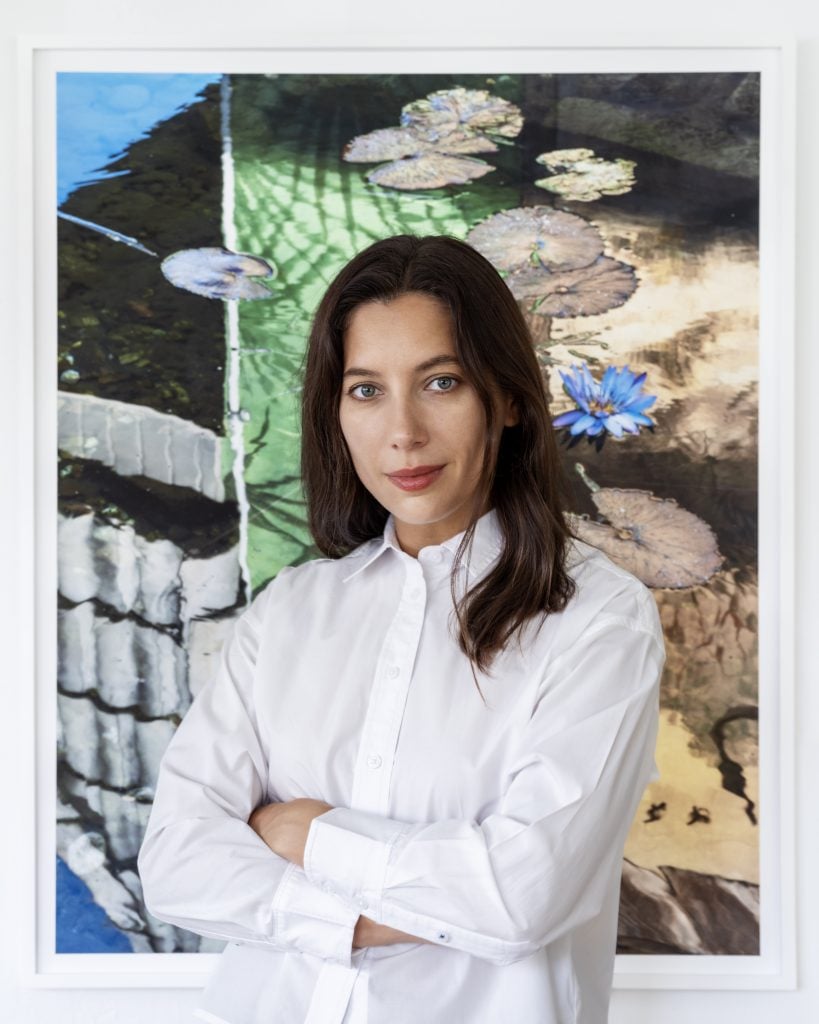
Artist Anastasia Samoylova will tell you Florida is more than just a destination—it’s a state of mind. The photographer, who has been living in Miami since 2016, has focused her lens on the surreal grit and glamor of her adopted home for nearly a decade.
“Miami itself is a studio for me,” said Samoylova in a recent conversation. “I was just shooting yesterday. I realized there was a particular image that I needed,” she said. “I know every street now by heart. Every little plant that’s intruding.”
Her decisively framed and (mostly) color photographs distill tensions and subtleties of an Edenic environment suspended between the pastel escapism and fantasy of a tourist’s dreams and the Southeast’s vulnerable ecological underbelly—which the current hurricane season has only further exposed.
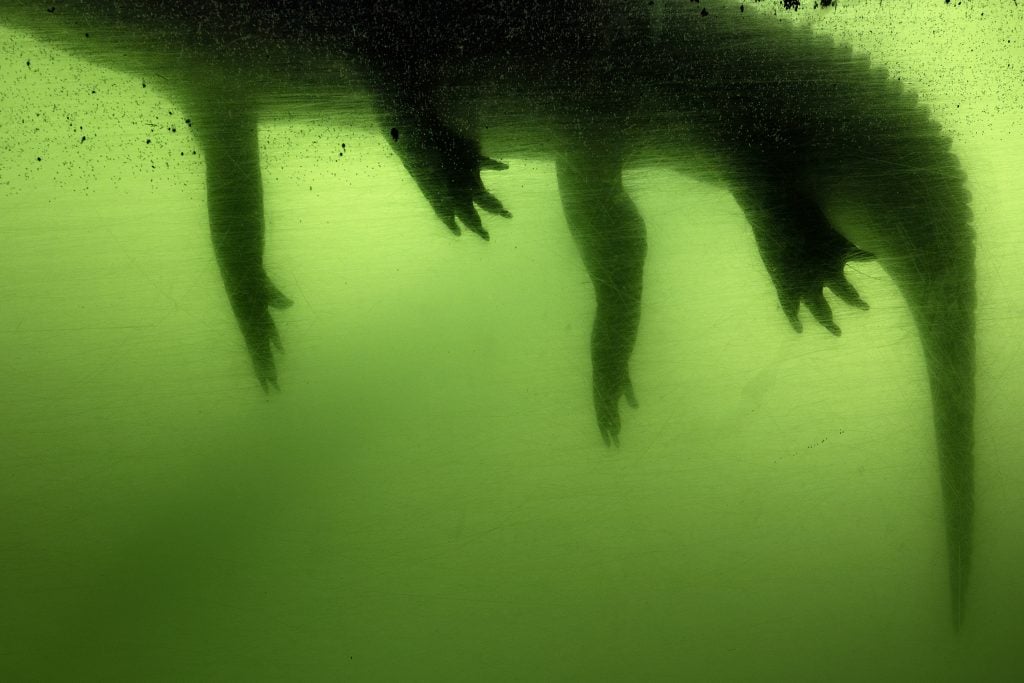
Anastasia Samoylova, Gator (2017). Courtesy of the artist.
Consider, for instance, Gator (2017) an almost serene photograph of an alligator seen floating, from below, in hazy green waters. The image is tranquil, albeit for the predator in plain sight. This photograph was the cover image for her 2019 book FloodZone, published by Steidl, which captured the lush beauty and creeping decay of life lived amid rising tides, on the precipice of what’s to come.
“Floridas: Anastasia Samoylova and Walker Evans” curated by Mia Fineman, now on view at the Metropolitan Museum of Art, brings the artist’s contemporary visions of Florida into context with those taken by the quintessential American photographer Walker Evans in the 1930s, 1940s, and into the 1970s, highlighting the the continuous pull that Florida has exerted over the photographic imagination.
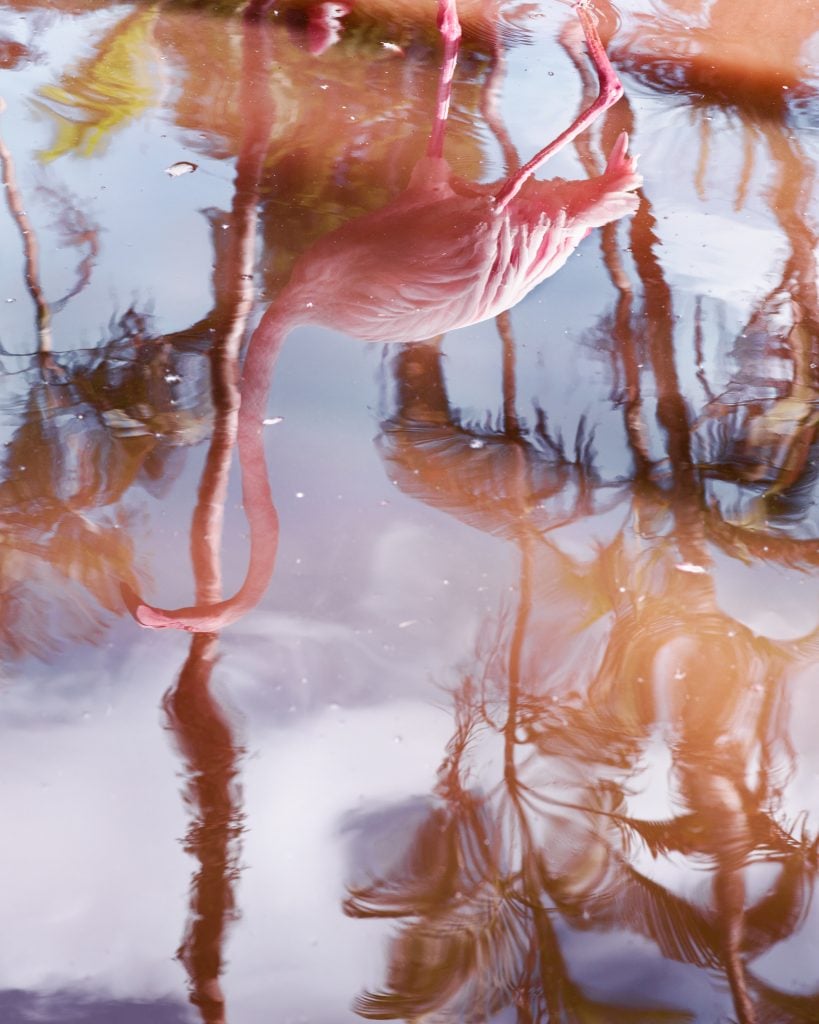
Anatastia Samoylova, Flamingo Reflection (2018). Courtesy of the artist.
Evans, who is best remembered for his Depression-era scenes of American life, almost made Florida a recurrent subject. In 1934, when he first traveled to the state, he wrote tellingly to a friend: “Florida is ghastly and very pleasant where I am.” Evans would travel to Sarasota in 1942 on a commission for journalist Karl Bickel, whose book The Mangrove Coast recounted the vibrant history of the region (Evans’s images from that project were republished in the 2000 book Walker Evans: Florida).
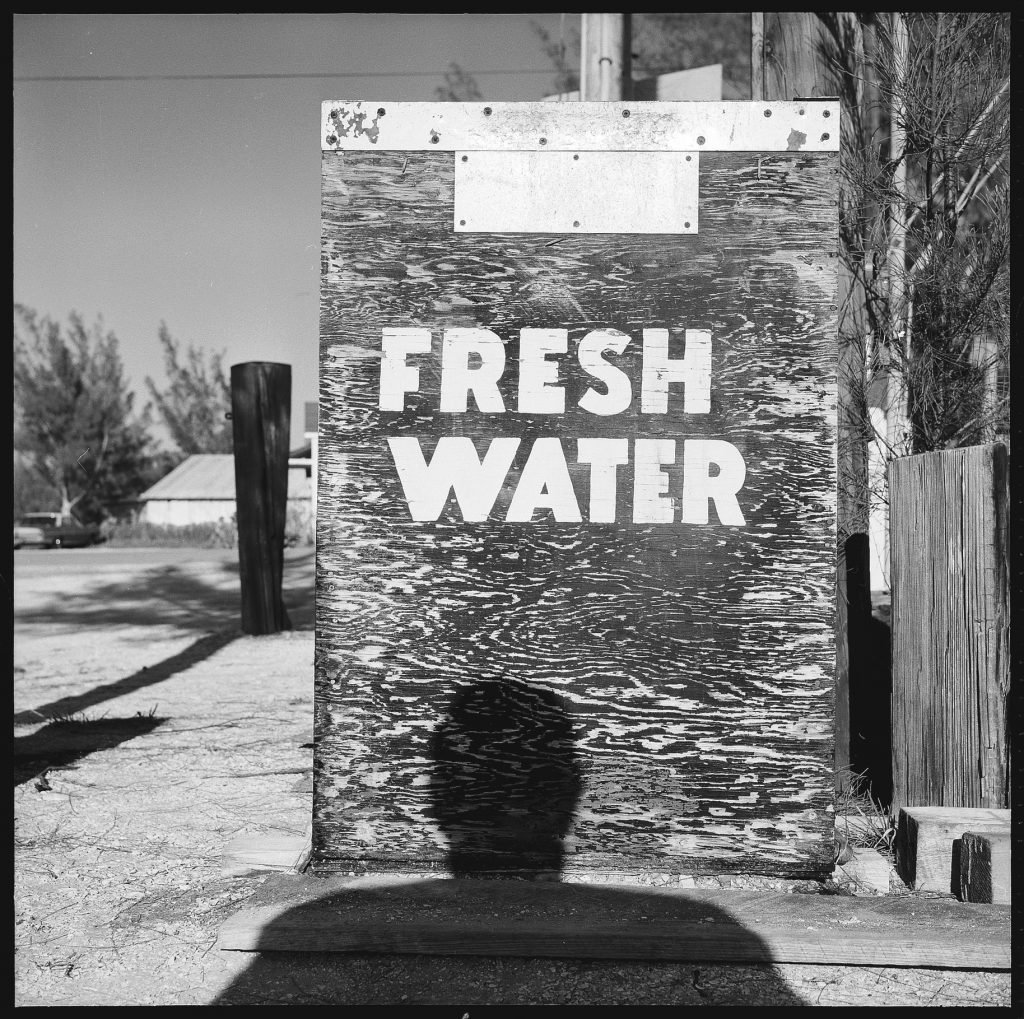
Walker Evans, Shadow Self-Portrait, Anna Maria Island (1968). © Walker Evans Archive, The Metropolitan Museum of Art.
Both Evans’s and Samoylova’s photographs thumb at a tension. “The plurality of the exhibition title ‘Floridas” means both me and Walker Evans, yes,” said Samoylova, “But also the fact that Florida can be divided into multiple states that don’t agree with each other as well as border idea that Florida is a stand-in for a concentrated Americana that can exist anywhere.”
Interestingly, the Met’s cross-generational exhibition had its genesis in a book, Anastasia Samoylova & Walker Evans: Floridas, published by Steidl in 2022. That book juxtaposed the two photographs discerning visions of Florida’s seductions and vulgarities and included an essay by David Campany and a short story by novelist Lauren Groff (Groff, whose own 2018 collection of short stories was entitled Florida, will be in conversation with the artist at the Met on November, 18).
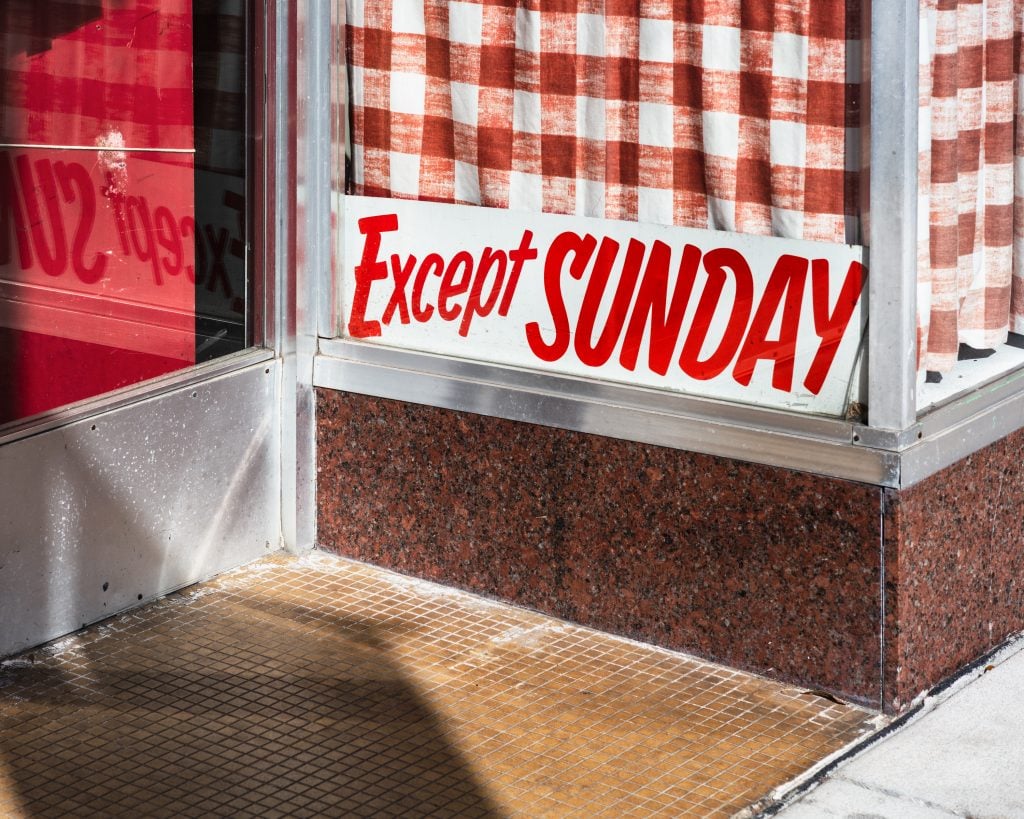
Anastasia Samoylova, Except Sunday (2021). Courtesy of the artist.
“I was shooting on the West Coast of Florida when I discovered that Walker Evans had done this project on commission in Florida,” she recalled, “I started laying our images side by side. Certain things have not changed. This place is a bit of a time capsule, literally, politically, and metaphorically. Florida, in my project, is meant to be a metaphor as much as documentation.”
Mixed-media paintings by Samoylova are also on view in the show, as are several lesser-known painted works by Evans. Samoylova, who was born in Russia in 1984, has a background in design and painting, and still paints, collaging aspects of her photographs onto canvases and expanding her visions. “The two practices feed off each other,” she explained. “One in the real world, one in the imagination.” Her photographic work is informed by painting, too, and she notes David Hockney, Robert Rauschenberg, Peter Doig, and Natalia Goncharova as influences.
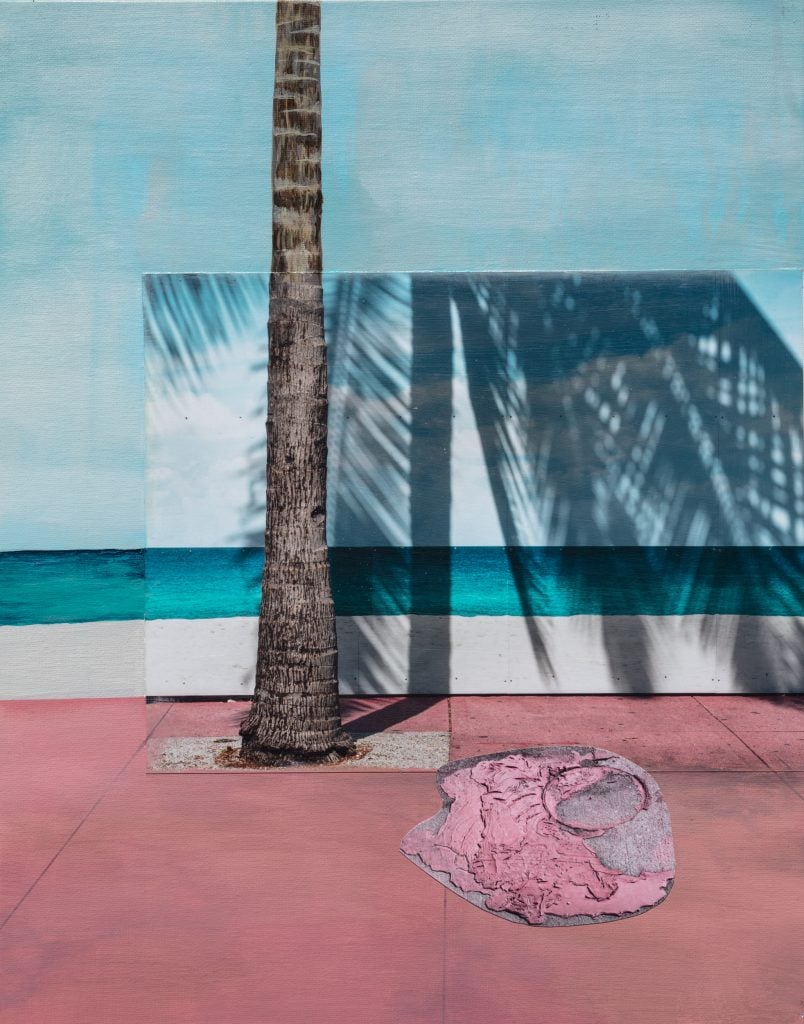
Anastasia Samoylova, Palm Shadow (2023). Courtesy of the artist.
For Samoylova, no matter the medium, the intentions of the practice remain the same. “My first schooling was in environmental design, grounded in Constructivism. Life and its many transitions—geographic and cultural—have been accompanied by a mythology of place. The deconstruction of that mythology is at the core of everything I do. Everything is adaptation,” she added.
Before moving to Miami, Samoylova and her husband spent their first seven years (and long winters) in the U.S. in Peoria, Illinois. When the possibility of relocating to Miami arose, the artist seized the chance to fulfill her life-long dream of living by the beach. Moving into a small apartment that she shared with her husband and son, Samoylova found herself compelled toward photography as a way of exploring her new environment outside of a studio.

Anastasia Samoylova, Blue House after Flood. Courtesy of the artist.
“I thought would be photographing material for paintings and collages,” she said, “But then realized if I zoomed in enough and was careful enough with the composition, the feeling of a collage was there.”
It’s important to say that it’s not lost on Samoylova that she’s one of only a handful of women documentary photographers garnering attention currently. That’s one more reason she feels this exhibition at the Met is important and why she’s focused on photography.
“When I started with documentary photography in 2016, I thought ‘How can I justify adding to this enormous pool of images that we’re all inundated with?’” she explained, “Then, I realized I don’t know many other documentary photographers who are women. Or who are immigrants. Women often work with other people’s archives, but why aren’t we generating our own?” The posterity of that archive is something she finds meaning in.

Anastasia Samoylova, Gun Ring, New York (2024). Courtesy of the artist.
As for her photographic influences, she finds a kinship with pioneering photographer Berenice Abbott. In 1954 Abbott set off on a road trip down U.S. Route 1, documenting her journey. These photographs from this series were on view at the Wolfsonian in 2017, a show Samoylova saw and felt moved by. For her part, she is now working on her own series focused on the Atlantic Coast, stretching from Charleston to the Hamptons to New England. The region she’s found most compelling so far? “In Washington D.C., the subjects I encountered were absolutely incredible,” she said with a laugh. “It’s been mind-blowing.”
“Floridas: Anastasia Samoylova and Walker Evans” curated by Mia Fineman is on view at the Metropolitan Museum of Art, New York, through May 11, 2025





